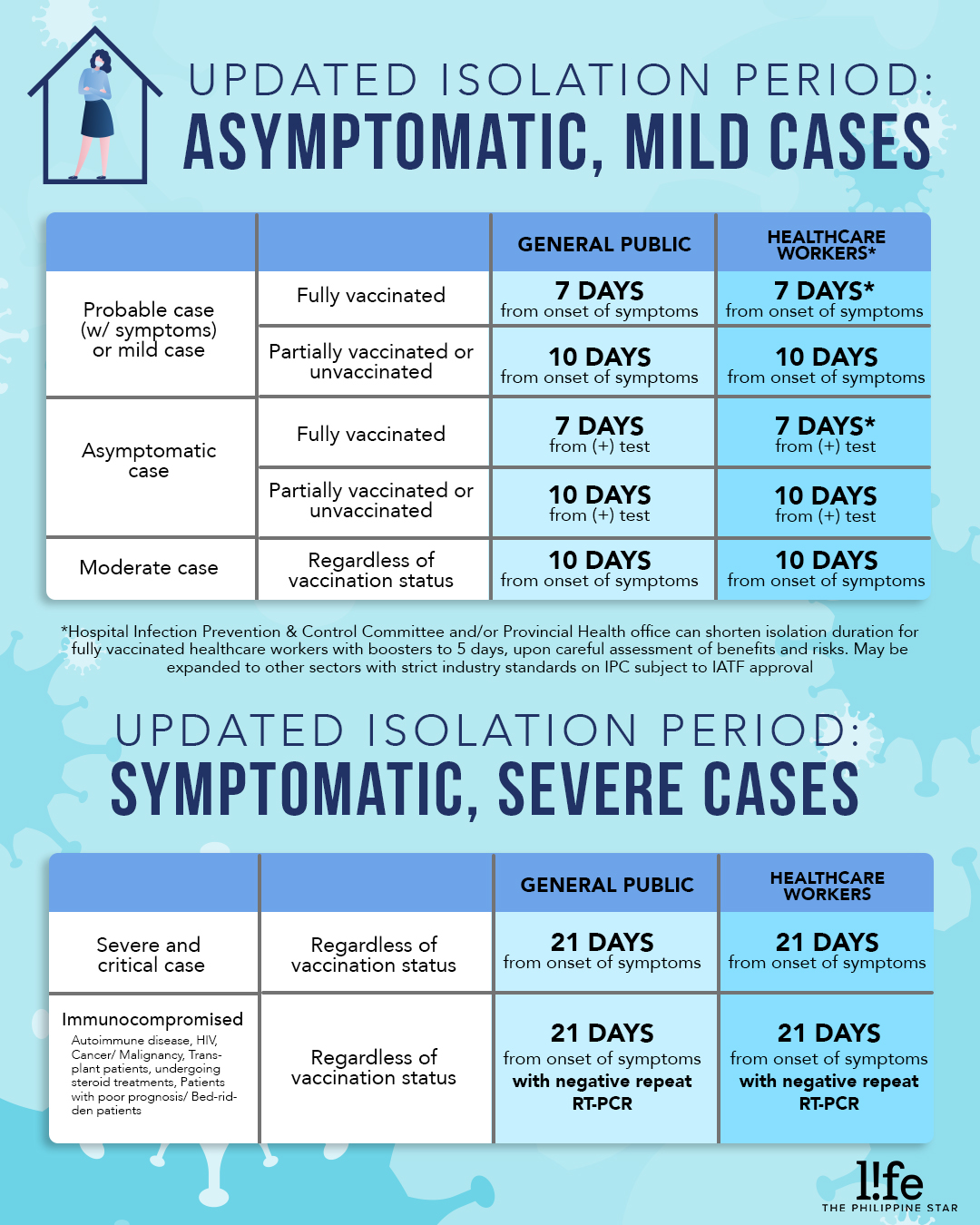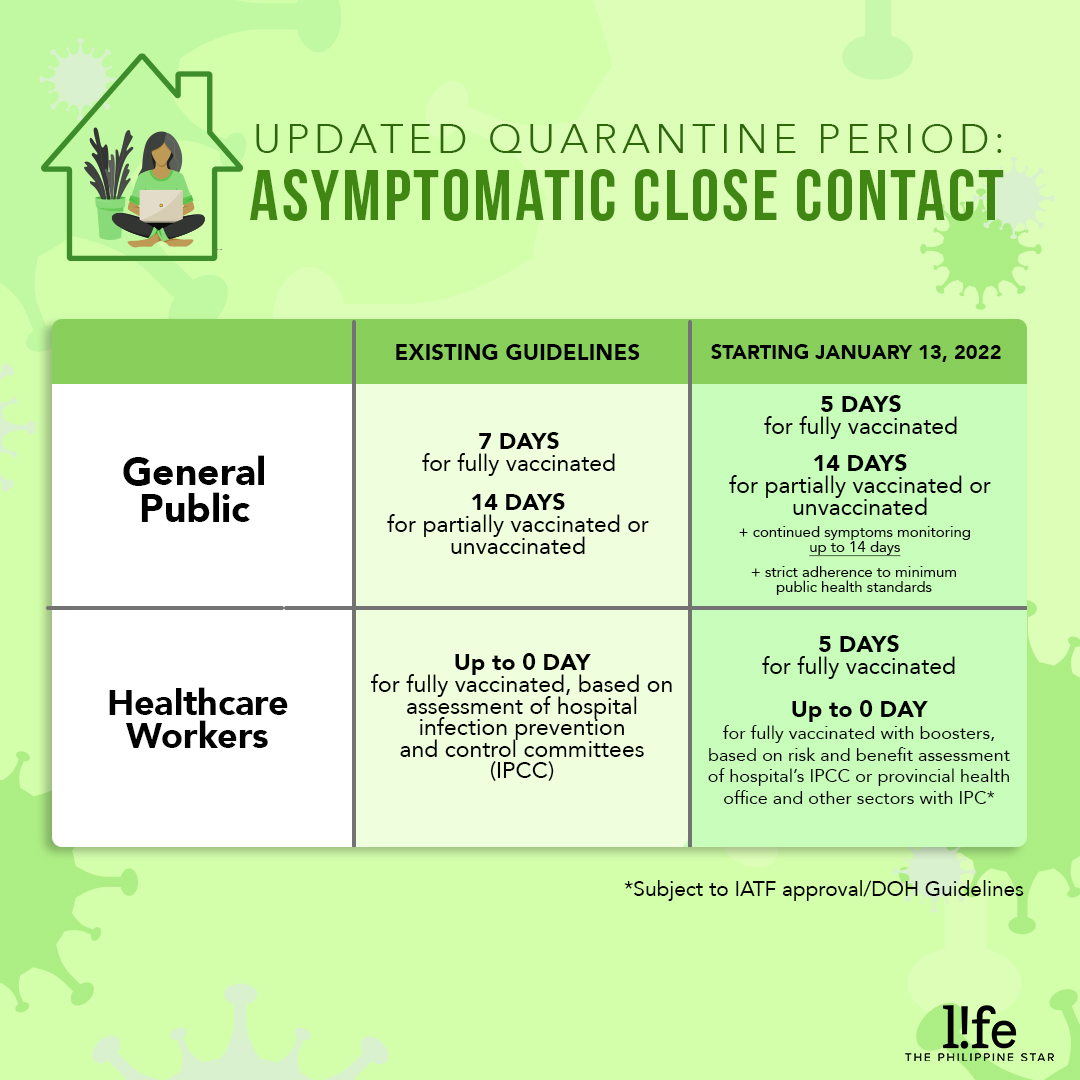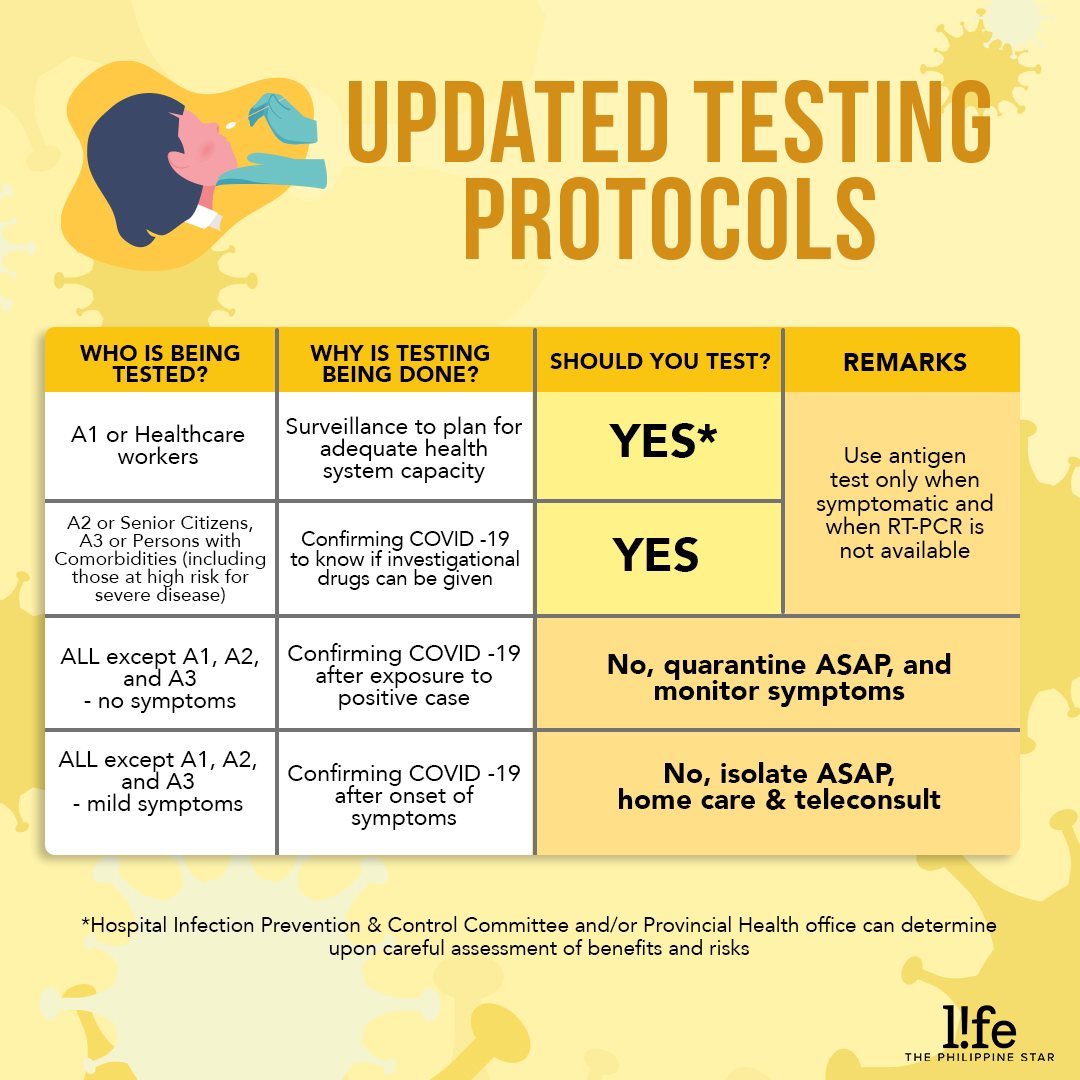DOH announces new protocols for COVID-19 isolation, quarantine, and testing. Here’s what you need to know
The Department of Health announced its updated policies and guidelines on isolation, quarantine, and testing for COVID-19 for the fully vaccinated, partially vaccinated, and unvaccinated.
DOH said the new protocols were based on their findings on mass vaccination, which show how it lowered the chances of severe disease and death at a significant rate, despite the current rise of cases in the Philippines. On Thursday, Jan. 13, the country recorded 34,021 new infections, pushing its total to 3,092,409—with 237,387 active cases, 2,802,286 recoveries, and 52,736 deaths.
In a recent press briefing, the DOH noted that current data in line with the benefits of vaccination and features of the Omicron variant has given them the confidence to do the following:
- shorten isolation and quarantine period;
- reserve testing when assessed by physician to be necessary for medical management; and
- make testing optional, especially for asymptomatic close contacts.
Below is a quick round-up of the following changes that have been made by DOH, which took effect starting Jan. 13.
Isolation
For fully vaccinated individuals who are showing symptoms (including mild cases), the isolation period will now be 7 days instead of 10. It will stay the same, however, for the unvaccinated as well as those who have only been partially vaccinated against COVID-19.
If you are asymptomatic but have been fully jabbed, the DOH would require an isolation period of 7 days from the time you tested positive for the virus. Meanwhile, 10 days of isolation are still needed if you are asymptomatic and are partially/unvaccinated still.
It’s also important to note that the isolation period for moderate infections would still be 10 days for all, regardless of vaccination status.
Twenty-one days are required for severe and critical cases and the immunocompromised (with negative repeat RT-PCR test) from the onset of symptoms, regardless of their vaccination status.

Quarantine
Quarantine period has been shortened from seven to five days for the fully vaccinated. The initial 14 days are still in place for both the partially vaccinated and the unvaccinated.
As per the DOH, quarantine is “for those who have been exposed and can possibly develop infection.”

Testing
Those under A1 (healthcare workers), A2 (senior citizens), and A3 (individuals with comorbidities) will be prioritized when it comes to RT-PCR testing. “This is because those above 60 years old or with comorbidity can be provided with different medicines or antivirals within the first five days of their symptoms,” said DOH Undersecretary Maria Rosario Vergeire.
“Surveillance or screening of healthcare workers ensures adequate healthcare system capacity to implement care in our facilities,” Vergeire said.

Testing is now optional for community-level actions. “Specifically, testing should not be required for asymptomatic close contacts. Instead, symptoms monitoring is recommended,” said Vergeire.
If a COVID-19 test needs to be conducted, it “should be done at least five days from the day of exposure.”
“At this point wherein we already have community transmission, contact tracing is not recommended as a priority intervention,” she added.



